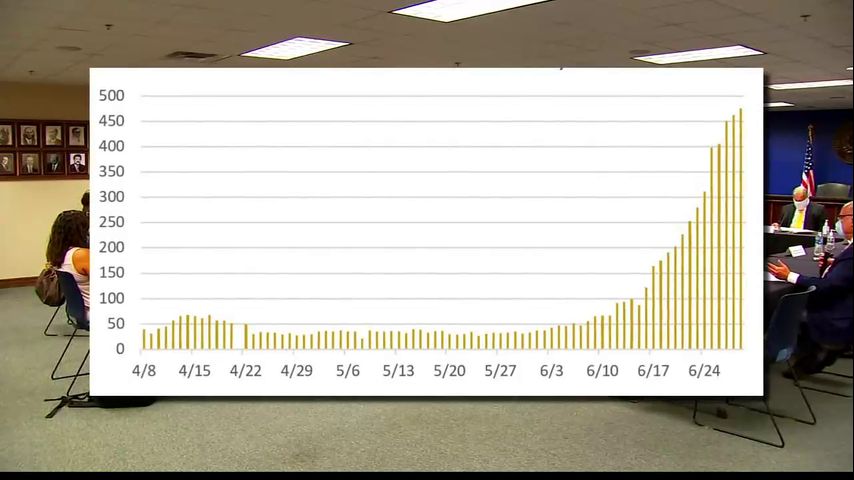Multiple factors affecting Valley hospitalization rates
Family dynamics, dwindling medical supplies, and holidays are contributing to the rise in COVID-19 related hospitalizations across the Rio Grande Valley. Hospital administrators and public health officials explained the correlation via a press conference held Monday.
Hospital capacity in the Valley is stretched far more than what was anticipated necessary as part of the pandemic response.
"The governor had an expectation set forth that we reserve 15% of our inpatient beds for COVID patients. From what I understand, from across the Valley, all the hospitals have exceeded that 15%. We did so voluntarily, and with pro-action in mind. We’ve increased it as the need has increased," Manny Vela, Valley Baptist Medical Center of Harlingen CEO, said.
Hospitalizations rose in late May across Texas, according to data published by the Texas Department of State and Health Services.
A similar upward trend was observed in the Valley's data. On June 16, hospitalizations jumped from 88 the previous day to 122. Since then, the numbers kept increasing. By June 29, the figure was 475. The mortality rate is expected to catch up.
Health officials suspect multiple factors for eating up space in hospitals one bed at a time.
Clusters of people getting sick are creating a catenary arch on the chart tracking positive cases in the county — the opposite of a "flattened curve."
Hidalgo County Health Department Director Eddie Olivarez said they're monitoring over 120 clusters ranging from two to as many as a dozen.
"I have one case that we're looking at that we know directly that person may have been the source contact to affect as many as 12 other people," Olivarez said.
Family gatherings or celebrations between those social circles are a greater concern with the approaching arrival of the Fourth of July weekend.
Multiple counties saw an increase in cases after the Memorial Day festivities, days after the governor ordered opening up the state on May 18.
Other family dynamics also play a role in delaying the availability of hospital beds. Discharging patients has become a challenging process. Families are not preparing for the recovering relative's homecoming.
"Please work with us," Dr. Robert Martinez, chief physician executive at DHR Health, said. "We're having a lot of issues, probably because people are scared of getting those patients back home even though they are safe to get home," Martinez said.
Preparations for those discharged must also include any necessary durable medical equipment. Short supply is extending the length of stay in those circumstances.
Martinez offered an anecdote exemplary of a different facet to the problem of hospital discharges.
DHR currently has an elderly couple recovering, but they can't be released. They have no family to offer them shelter.
That prompted renewed discussion of an alternative treatment center.
Hospital administrators believe the best collaborative use for the site would be as a post-discharge area. It's an idea gaining momentum but lacking a firm foundation.
"There’s some difficulties in regards to the logistics: where is that going to be? Is that going to be a hotel? Can you force people to stay there? Who’s going to man those facilities? Those are all parts of the discussion that are ongoing right now," Manny Vela, Valley Baptist Medical Center for Harlingen CEO, said.
Overall, the growing number of cases are creating a variety of problems. Doctors stressed the solution lies outside of the health care systems.
"The hospital is not going to solve it. The judge is not going to solve it," Martinez said. "We have that solution including masks, social distancing, and washing our hands."




